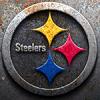Yes, I know, my long run laser job is still running.......
While it's running, I wanted to make up some demo stuff for my vinyl work to hang around here or take with me if I need to. One thing that I did was make a "No Parking" sign with a bunch of extra stuff on it. Something I get asked to now and then.
I've had two problems, glass and pre-painted metal sign blanks. I can do both wet, no problem, but I'm trying to apply vinyl dry more and more now and both of those applications leave me with a truck load of tiny air bubbles in the final product.
I have squeeged until the cows came home and danged if I can apply vinyl to a super slick surface without tiny bubbles under it. Wet, it looks like it was painted on when I'm done. Dry.....not so much.
So, I've reverted to taping it in place, ala hinge method, and then lightly applying application fluid to it, flipping it down, and squeeging it. Comes out very nice.
So, what's the trick for dry on super smooth surfaces with no bubbles?





 Reply With Quote
Reply With Quote



